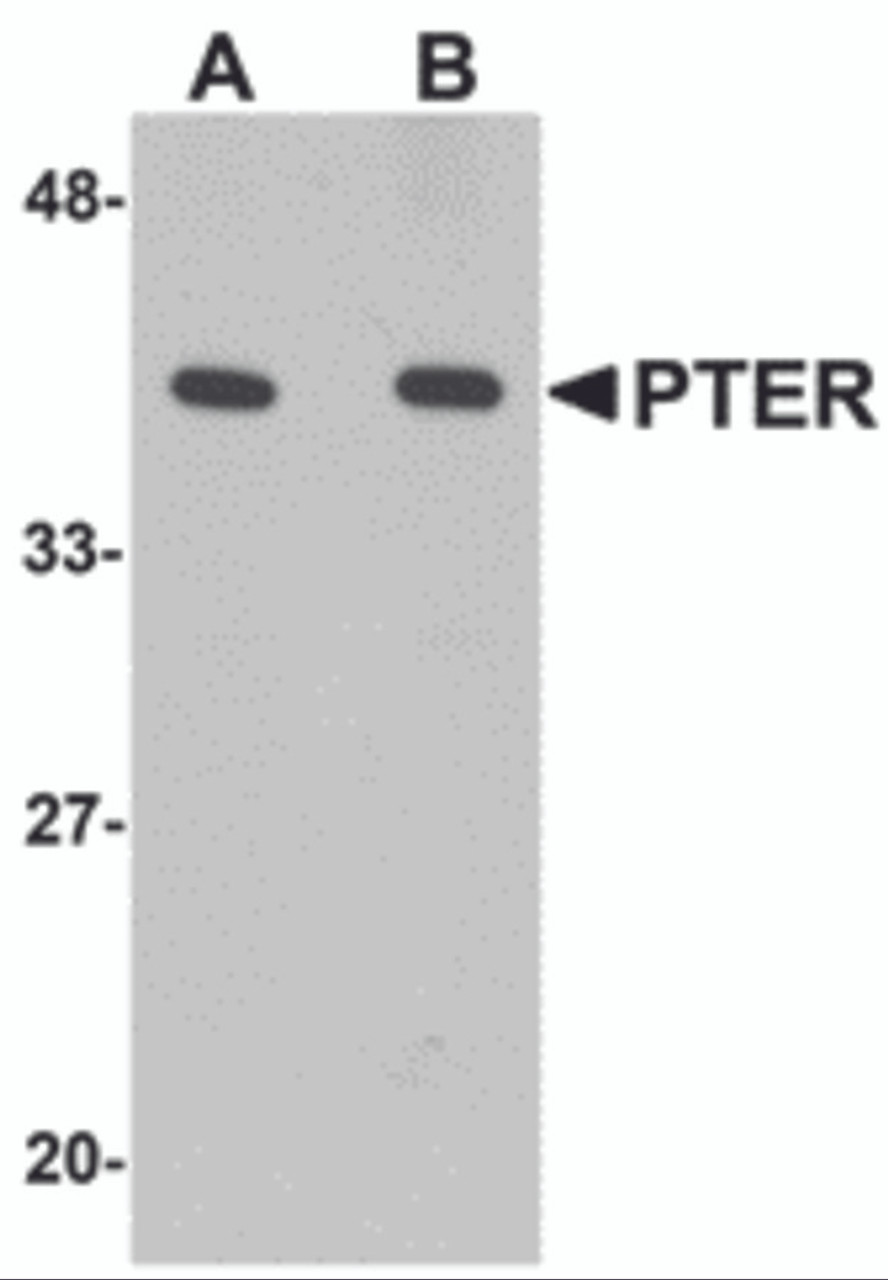Product Description
PTER Antibody | 5173 | ProSci
Host: Rabbit
Reactivity: Human, Mouse, Rat
Homology: Predicted species reactivity based on immunogen sequence: Bovine: (88%)
Immunogen: PTER antibody was raised against a 16 amino acid synthetic peptide from near the carboxy terminus of human PTER.
The immunogen is located within amino acids 250 - 300 of PTER.
Research Area: Obesity
Tested Application: E, WB, IHC-P
Application: PTER antibody can be used for detection of PTER by Western blot at 1 - 2 μg/mL. Antibody can also be used for immunohistochemistry starting at 2.5 μg/mL.
Antibody validated: Western Blot in human samples and Immunohistochemistry in mouse samples. All other applications and species not yet tested.
Specificiy: N/A
Positive Control 1: Cat. No. 1305 - Human Kidney Tissue Lysate
Positive Control 2: N/A
Positive Control 3: N/A
Positive Control 4: N/A
Positive Control 5: N/A
Positive Control 6: N/A
Molecular Weight: N/A
Validation: N/A
Isoform: N/A
Purification: PTER Antibody is affinity chromatography purified via peptide column.
Clonality: Polyclonal
Clone: N/A
Isotype: IgG
Conjugate: Unconjugated
Physical State: Liquid
Buffer: PTER Antibody is supplied in PBS containing 0.02% sodium azide.
Concentration: 1 mg/mL
Storage Condition: PTER antibody can be stored at 4˚C for three months and -20˚C, stable for up to one year. As with all antibodies care should be taken to avoid repeated freeze thaw cycles. Antibodies should not be exposed to prolonged high temperatures.
Alternate Name: PTER Antibody: HPHRP, RPR-1, Phosphotriesterase-related protein, Parathion hydrolase-related protein, hPHRP
User Note: Optimal dilutions for each application to be determined by the researcher.
BACKGROUND: PTER Antibody: PTER is a mammalian homolog to bacterial phosphotriesterases, enzymes that hydrolyze phosphotriester-containing organophosphate pesticides. It is expressed primarily in the proximal renal tubules and the gene has been localized in humans to chromosomal band 10p12 by in situ hybridization. PTER, in addition to FTO, MC4R, and NPC1 has recently been shown to be a new risk loci for early-onset and morbid adult obesity in European populations. At least two isoforms of PTER are known to exist.
 Euro
Euro
 USD
USD
 British Pound
British Pound
 NULL
NULL
















